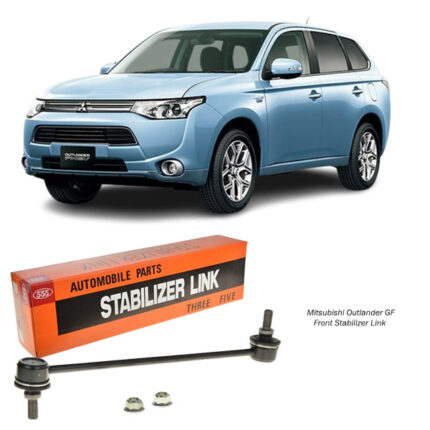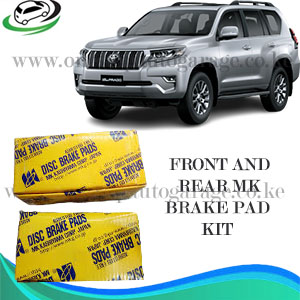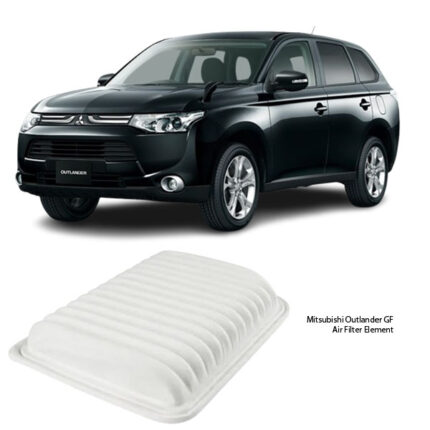-13%
Get Mitsubishi Outlander GF Air Filter Element Assy MR968274 in Kenya
The air filter element assembly is a crucial component in an internal combustion engine. It plays a significant role in ensuring clean air enters the engine, optimizing performance, fuel efficiency, and longevity. Without a functional air filter, contaminants such as dust, dirt, and debris can enter the engine, causing wear and damage over time.
This detailed guide explores the function, types, benefits, symptoms of failure, maintenance tips, and replacement process of an air filter element assembly.
What is an Air Filter Element Assembly?
An air filter element assembly is a device that removes contaminants from the air before it enters the engine’s intake system. It consists of:
- Filter Media – A porous material (paper, foam, or cotton) that captures dirt and debris.
- Housing (Air Filter Box) – A protective casing that secures the filter in place.
- Intake Ducts – Channels that direct air from the environment into the filter.
The air filter is positioned inside the air intake system, usually near the front of the vehicle or inside the engine bay. It ensures only clean air reaches the combustion chamber, preventing engine wear and maintaining efficiency.
How Does an Air Filter Element Work?
The air filter element operates as a barrier, preventing contaminants from entering the engine. The process works as follows:
- Air Intake Process – The engine draws in air through the intake system.
- Filtration Stage – The air passes through the filter media, which traps dirt, dust, pollen, and debris.
- Clean Air Flow – The filtered air enters the engine’s intake manifold for combustion.
- Fuel Combustion – Clean air mixes with fuel, ensuring efficient combustion and engine performance.
A clogged or dirty air filter restricts airflow, reducing engine power and fuel efficiency.
Types of Air Filter Element Assemblies
There are several types of air filter elements, each with unique properties and benefits.
1. Paper Air Filters
- Made from pleated cellulose fibers.
- Cost-effective and widely used in passenger vehicles.
- Disposable and requires periodic replacement.
2. Foam Air Filters
- Made from polyurethane foam.
- Common in off-road vehicles and motorcycles due to their ability to trap fine dust particles.
- Can be washed and reused with proper maintenance.
3. Cotton Air Filters
- Made from oiled cotton gauze for high airflow and filtration efficiency.
- Used in performance vehicles to enhance horsepower.
- Reusable and requires occasional cleaning.
4. Carbon-Activated Air Filters
- Contains a layer of activated carbon to absorb odors and pollutants.
- Used in luxury and hybrid vehicles.
- Helps reduce engine emissions.
5. High-Performance Air Filters (Cold Air Intake Filters)
- Designed for enhanced airflow and engine performance.
- Used in sports cars and high-performance engines.
- Requires frequent cleaning to maintain efficiency.
Benefits of an Air Filter Element Assembly
A clean air filter is essential for vehicle performance and longevity.
1. Improves Engine Performance
- Ensures optimal air-fuel mixture for smooth combustion.
- Provides better throttle response and acceleration.
2. Enhances Fuel Efficiency
- Unrestricted airflow improves combustion, reducing fuel consumption.
- A clogged filter can lower fuel efficiency by up to 10%.
3. Protects Engine Components
- Prevents dirt, dust, and debris from entering the combustion chamber.
- Reduces wear on pistons, cylinders, and valves.
4. Reduces Emissions
- Clean air ensures complete fuel combustion, reducing carbon deposits.
- Helps lower exhaust emissions and meets environmental standards.
5. Prolongs Engine Life
- Minimizes internal engine damage caused by airborne contaminants.
- Extends the lifespan of spark plugs, fuel injectors, and sensors.
6. Supports Turbocharged Engines
- For turbocharged vehicles, a clean air filter ensures proper boost pressure.
- Prevents turbo lag and overheating.
Signs of a Dirty or Clogged Air Filter
A worn-out or clogged air filter can cause noticeable performance issues. Look for these symptoms:
1. Reduced Acceleration and Power
- A dirty air filter restricts airflow, causing sluggish throttle response.
- The engine struggles to generate power, especially at higher RPMs.
2. Decreased Fuel Economy
- A clogged filter forces the engine to consume more fuel for combustion.
- If you notice frequent fuel refills, check the air filter.
3. Black Smoke from Exhaust
- A dirty filter leads to incomplete combustion, producing black smoke.
- This is a sign of excess fuel being burned inefficiently.
4. Unusual Engine Sounds
- A restricted airflow causes the engine to run rough at idle.
- You may hear coughing, sputtering, or popping sounds from the intake.
5. Check Engine Light
- Some vehicles detect airflow issues and trigger a check engine warning.
- A clogged filter can affect mass airflow sensor (MAF) readings.
6. Strong Fuel Smell
- A dirty air filter causes unburnt fuel to exit through the exhaust.
- This results in a noticeable gasoline odor near the vehicle.
Causes of Air Filter Element Failure
Several factors contribute to air filter degradation:
- Driving in Dusty Environments – Accelerates clogging with fine particles.
- Lack of Regular Maintenance – Leads to excessive dirt buildup.
- Poor-Quality Filters – Cheap filters provide insufficient filtration.
- Moisture and Oil Contamination – Causes filter media to deteriorate faster.
- Excessive Engine Load – High-performance engines require frequent filter changes.
Air Filter Element Assembly Maintenance Tips
Regular air filter maintenance ensures optimal engine performance.
1. Check and Replace the Filter Periodically
- Inspect the air filter every 10,000 to 15,000 miles or as recommended.
- Replace it if it appears dark, clogged, or excessively dirty.
2. Clean Reusable Filters Properly
- Foam and cotton filters should be cleaned with mild detergent and re-oiled.
- Avoid using excessive oil, as it can affect MAF sensor readings.
3. Avoid Driving in Harsh Conditions
- Reduce exposure to dusty roads, construction sites, and industrial areas.
- If unavoidable, check and replace the filter more frequently.
4. Choose High-Quality Filters
- Always use OEM or high-performance aftermarket filters.
- Low-quality filters may allow particles to bypass the filtration system.
5. Inspect for Air Leaks
- Ensure the air filter is securely fitted inside the housing.
- Check for cracks or leaks in the intake duct that may allow unfiltered air.
How to Replace an Air Filter Element Assembly
Replacing an air filter is simple and requires minimal tools.
Steps to Replace the Air Filter:
- Locate the Air Filter Housing – Usually found near the engine bay.
- Open the Housing – Remove clips or screws to access the filter.
- Take Out the Old Filter – Inspect for dirt and damage.
- Install the New Filter – Ensure it fits snugly inside the housing.
- Close the Housing Securely – Lock the clips or screws back in place.
The entire process takes 5–10 minutes and does not require professional assistance.
Conclusion
The air filter element assembly is a critical component for engine performance, fuel efficiency, and longevity. Regular inspection and timely replacement ensure optimal airflow and protection from contaminants.
If your vehicle shows signs of reduced power, poor fuel economy, or excessive exhaust smoke, it may be time to check or replace your air filter! 🚗🔧
Follow us on Facebook for more parts.




